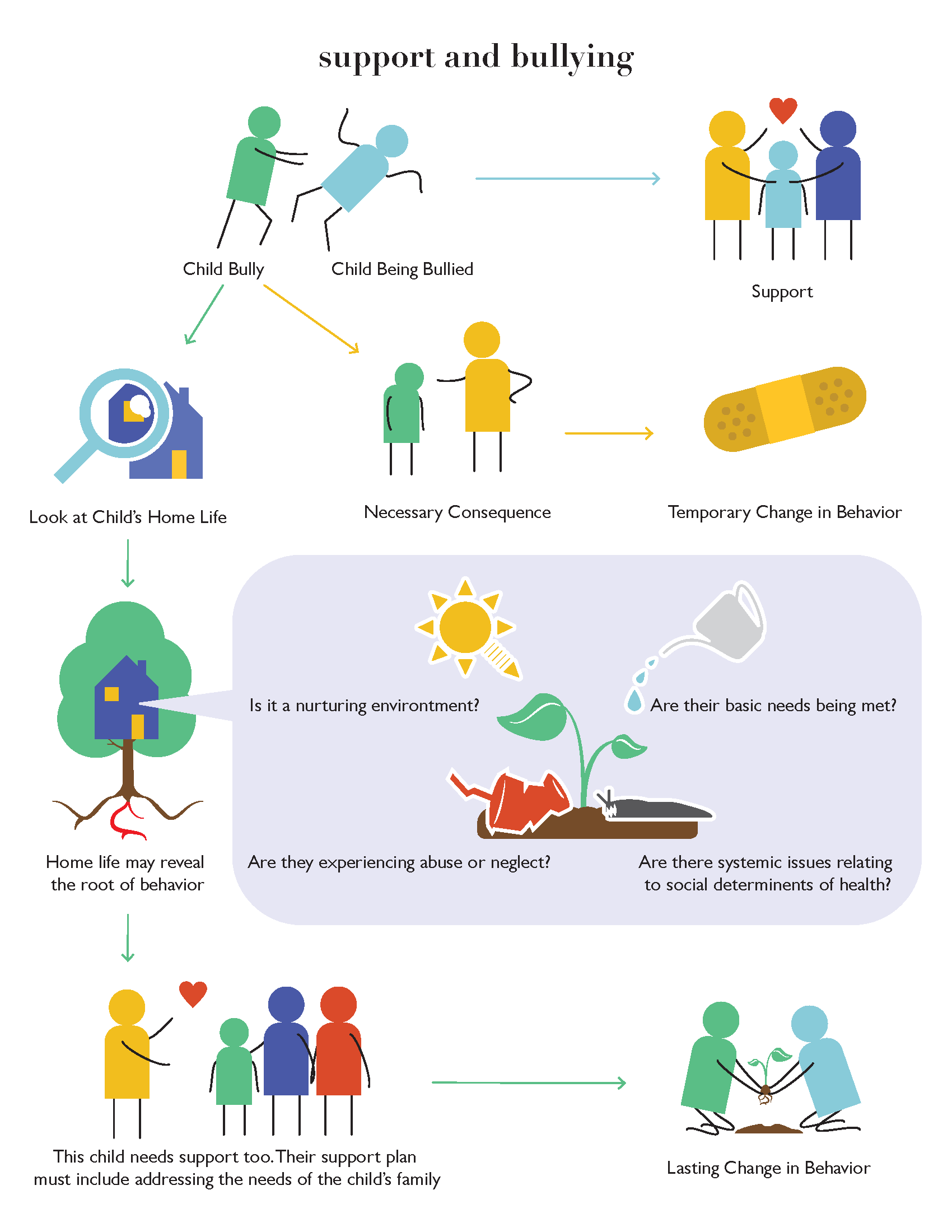Systemic Trauma
We tend to look at trauma as a problem that is strictly individual by nature (which may be, in part, due to the hyper-individualistic nature of our society as a whole). Sometimes an experience of trauma is very much individual, but often there is more going on beneath the surface. Systemic problems such as poverty, poor healthcare services and ineffective education can create conditions for traumatic situations to occur.
Though there usually is a specific person or situation that caused a traumatic event, and we must address that, often we neglect to see how deeply flawed systems are perpetuating the trauma.
For example, when a child is bullied in school. It is necessary for the child who is bullying to be accountable and experience consequences for their behaviour.

However, to make a lasting change we must also look at the child’s homelife. Are they experiencing abuse? Are their basic needs being met? Are they living in a nurturing environment? Are they living in poverty? Is the family dealing with a systemic issue related to social determinants of health?
A systems approach is needed if we want the child who is bullying to recognize the harm in their behaviour. This means that the needs of the child’s family must be addressed too.
The truth is that we are a traumatized nation–a traumatized world. Trauma gives rise to more trauma. It’s cyclical and will continue to cycle until we are collectively much more deliberate about disrupting the cycles.
Starting Where We Are
So what can be done about systemic trauma? Is there a way we can do our part? YES! Doing our own work to adopt a trauma-informed lens, building healing-centered connections, while integrating the core values of peer support into our work will make a difference in people’s lives.
In general, as a society we are not good at addressing systemic trauma. The systems can seem so big, and the scale of the problem so overwhelming. So we create band-aid approaches to deal with the aftermath of trauma, but we tend not to focus on healing or prevention.
We live in an individualistic society that doesn’t often consider the collective needs of people – we tend to each tree without recognizing the threats to the whole forest. In a more interconnected society, we would be working hard to change the systemic conditions that both create trauma and continue to retraumatize people.
Both as a society and as individuals, we need to learn to perceive and address trauma differently. It is essential that we learn to see and interact with the world through a trauma-informed lens. Unless we intentionally work to change these traumatizing systems, history will continue to repeat itself.
What are some ways you see systems creating or perpetuating cycles of trauma?
Media Attributions
- Support and bullying by Jeseye Tanner is licensed under a CC BY 4.0 licence.

